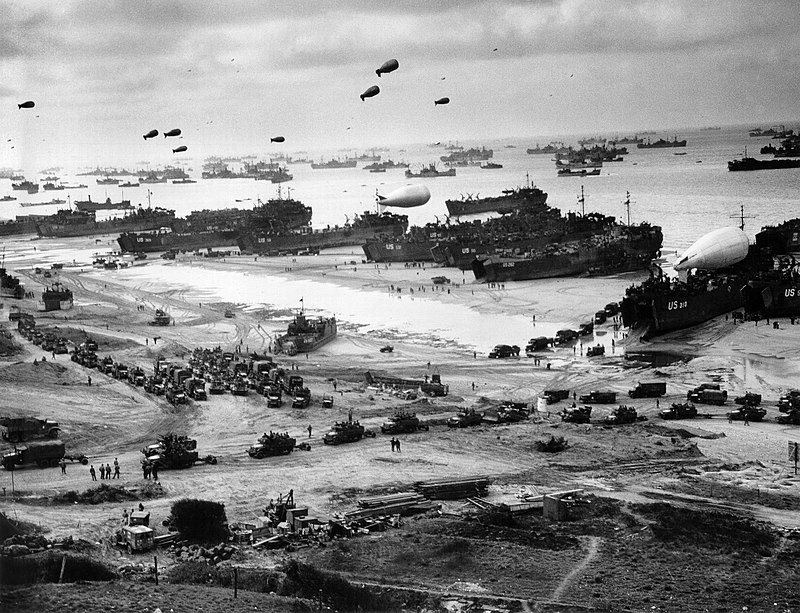by John M. Floyd
I've often told my writing students that there are three markets for short fiction: magazines, anthologies, and collections. (You can also self-publish stories one at a time, if you need a fourth option.) Most of my shorts are targeted to magazines, but lately I've seen more and more routed toward anthologies, either via invitation or via an open call. And most anthologies are themed in that they feature tales that have something in common.
This common ground can be almost anything, from location to genre to time period. Here are some of the anthologies I've had stories in, along with their themes:
 - the seven deadly sins -- Seven by Seven (Wolfmont Publishing, 2006)
- the seven deadly sins -- Seven by Seven (Wolfmont Publishing, 2006) - the afterlife -- After Death (Dark Moon Press, 2013)
- Texas -- The Eyes of Texas (Down & Out Books, upcoming)
- New England -- Landfall (Level Best Books, 2018)
- natural disasters -- Quakes and Storms (Lake Fossil Press, 2005)
- travel -- Passport to Murder (Down & Out Books, 2017)
- the moon -- Under the Full Moon's Light (Owl Hollow Press, 2018)
- the South -- Fireflies in Fruit Jars (Queen's Hill Press, 2007), Mad Dogs and Moonshine (Queen's Hill, 2008), Sweet Tea and Afternoon Tales (AWOC Publishing, 2009), Magnolia Blossoms and Afternoon Tales (AWOC, 2010), Rocking Chairs and Afternoon Tales (Doctor's Dreams Publishing, 2012)
- time travel -- Crime Travel (Wildside Press, upcoming)
- safe havens -- Sanctuary (Darkhouse Books, 2018)
- private investigators -- Coast to Coast: Private Eyes from Sea to Shining Sea (Down & Out Books, 2017)
 - Joni Mitchell songs -- The Beat of Black Wings (upcoming)
- Joni Mitchell songs -- The Beat of Black Wings (upcoming)- Florida -- Florida Happens (Three Rooms Press, 2018)
- the 1950s -- Pop the Clutch (Dark Moon Books, 2019), Mid-Cantury Murder (Darkhouse Books, upcoming)
- flash fiction -- Short Tales (2006)
- politics -- We've Been Trumped (Darkhouse Books, 2016)
- Mississippi -- Mississippi Noir (Akashic Books, 2016), What Would Elvis Think? (Clinton Ink-Slingers, 2019)
- horror -- Horror Library, Vol. 6 (Farolight Publishing, 2017)
- romance -- Meet Cute (Indiegogo, 2017)
- mystery -- Short Attention Span Mysteries (Kerlak Publishing, 2005), Crime and Suspense I (Wolfmont Publishing, 2007), Mouth Full of Bullets (Best of, 2007), Ten for Ten (Wolfmont Publishing, 2008), A Criminal Brief Christmas anthology (Criminal Enterprises Press, 2009), Trust and Treachery (Dark Quest Books, 2014), Flash and Bang (Untreed Reads Publishing, 2015), The Best American Mystery Stories (Houghton Mifflin Harcourt, 2015 and 2018)
- science fiction -- Visions VII: Universe (Lillicat Publishers, 2017)
- fantasy -- Children of the Sky (Schreyer Ink Publishing, 2018), Freakshow (Copper Pen Press, upcoming), Voices and Visions (Cyberwit Publishing, upcoming)
 - food and drink -- Noir at the Salad Bar (Level Best Books, 2017)
- food and drink -- Noir at the Salad Bar (Level Best Books, 2017)- Louisiana -- Blood on the Bayou (Down & Out Books, 2016)
- the military -- The Odds Are Against Us (Liberty Island Media, 2019)
- the ten commandments -- Thou Shalt Not (Dark Cloud Press, 2006)
I suspect some of these titles were familiar to you, since I've been lucky enough to share space with many of you in these books. And I hope seeing them might remind you, as it reminds me, of just how you went about satisfying whatever theme each of them required.
Tailor-made
Writing a story to match a theme can be fun, but it can also be hard, at least for me. I know a few writers who love themed anthologies because writing to a particular subject is challenging and inspiring to them. Others find it difficult, and prefer sticking to their own story ideas. Occasionally I've stumbled onto a submission call for an anthology whose theme perfectly matches a story I've already written, which makes the process easier. That doesn't happen a lot.
Marketingwise, one good thing about anthologies is that they're sometimes receptive to reprints (some actually prefer reprints). Another is that--if you do have a story that fits the theme--the usually-short submission window can mean less competition. But there are two downsides to anthologies. One is that the pay can be less than what you might get from a magazine, and the other is that anthologies--unless they're widely-published best-of-the-year anthos--often get limited exposure.
 A team effort
A team effortAnother thing about anthologies. Depending on the project, one can often feel a definite bond with the other contributors. An example of that, for me, was the 49-story anthology Seven by Seven, edited by Tony Burton of Wolfmont Publishing in Georgia. Tony chose seven authors from seven different states to write seven stories each about the Seven Deadly Sins. My participation in 7x7 led to treasured and longtime friendships with the editor and with several of the other writers (Deborah Elliott-Upton, BJ Bourg, Frank Scalise, and Gary Hoffman). Probably because the project happened fairly early in our writing careers and included so many stories by only seven authors, I think all of us had great fun and learned a lot as well.
The latest anthology featuring one of my stories is a book called What Would Elvis Think?: Mississippi Stories. The common thread is that each tale must be set in a town in Elvis's birth state. It was edited by a friend and former student of mine, Johnny Lowe, and is being released today, June 15. One reason I'm pleased to have been included in this project is that 16 of the 22 other contributors are also friends of mine. Most of us plan to be at Lemuria Books here in Jackson for the launch signing this afternoon at two o'clock. If you're reading this on your phone and you happen to be down this way today, stop in.
What percentage of the stories you write are submitted to anthologies, rather than to magazines? What kind of payment do you usually receive (flat rate, royalty, pat on the back)? Do you tend to try anthologies first, or try them only after a magazine has rejected a story? Do you enjoy writing to a particular theme? Do you find it difficult (as I do)? Are most of your antho stories reprints, or originals? Are you often invited to contribute a story, or do you usually submit as a response to an open call?
Meanwhile, whether you're targeting your stories to magazines OR anthologies, I wish you luck. May the submission gods (another name for editors) favor you with hundred-watt smiles, all the way to the bank.
See you in two weeks.









































